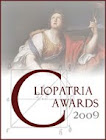The latest issue of HS is now up on the Project Muse site. It is a longer issue than normal, featuring two forums, five essays, and four interviews. Readers might be especially interested in our forum on Geoffrey Parker’s Global Crisis: War, Climate Change and Catastrophe in the Seventeenth Century (Yale University Press, 2013), one of the most important history books of the last year. As Don Yerxa puts it in the intro to the forum: "It has been widely heralded as an extraordinary scholarly achievement. Parker makes the case for a link between climate change and the worldwide catastrophe that occurred 350 years ago. We asked Parker to begin our forum with an account on the book’s long gestation. Then three prominent scholars, Kenneth Pomeranz, J.R. McNeill, and Jack Goldstone, comment on Global Crisis, followed by Parker’s rejoinder."
This issue, as many of our readers know, also marks an important transition for HS. We are suspending publication for the remainder of 2014 as we forge a more sustainable operational framework. We are hopeful that some very promising developments will enable us to resume publishing a new and improved Historically Speaking in 2015.
TOC, Historically Speaking (November 2013)
"Silver and Segregation"
Wyatt Wells
"Winston Churchill and the Literary History of Politics"
Jonathan Rose
"Winston Churchill and Almighty God"
David Reagles and Timothy Larsen
"Liberal Protestantism in 20th-Century America: An Interview with
David A. Hollinger"
Conducted by Randall J. Stephens
"Catastrophe 1914: An Interview with Max Hastings"
Conducted by Donald A. Yerxa
Digital versus Printed Historical and Literary Editions: A Forum
"Television Is Not Radio with Pictures"
Holly Cowan Shulman
"Pouring Old Editorial Wine into New Digital Bottles"
Constance Schulz
"The Changing Production and Consumption of Historical and Literary Texts: The View from the Simms Initiatives"
David Moltke-Hansen
"The Invention of the American Meal: An Interview with Abigail Carroll"
Conducted by Donald A. Yerxa
"Global Crisis: A Forum The Genesis of Global Crisis"
Geoffrey Parker
"Weather, War, and Welfare: Persistence and Change in
Geoffrey Parker’s Global Crisis"
Kenneth Pomeranz
"Maunder Minimum and Parker Maximum"
J.R. McNeill
"Climate Lessons from History"
Jack A. Goldstone
"Response"
Geoffrey Parker
"A Combat History of the Great War: An Interview with Peter Hart"
Conducted by Donald A. Yerxa
"Jewish History and Education: A Review Essay"
Philip T. Hoffman
"Töchter of Feminism: Germany and the Modern Woman Artist"
Diane Radycki
















